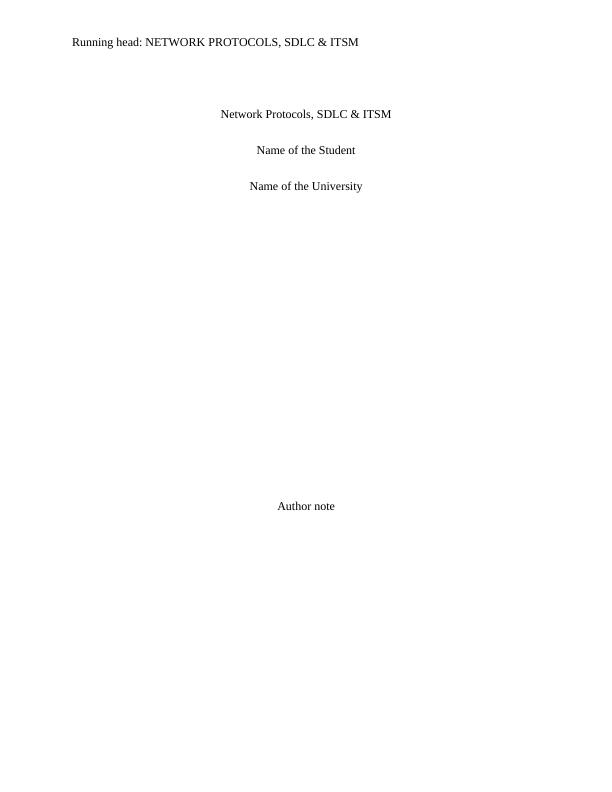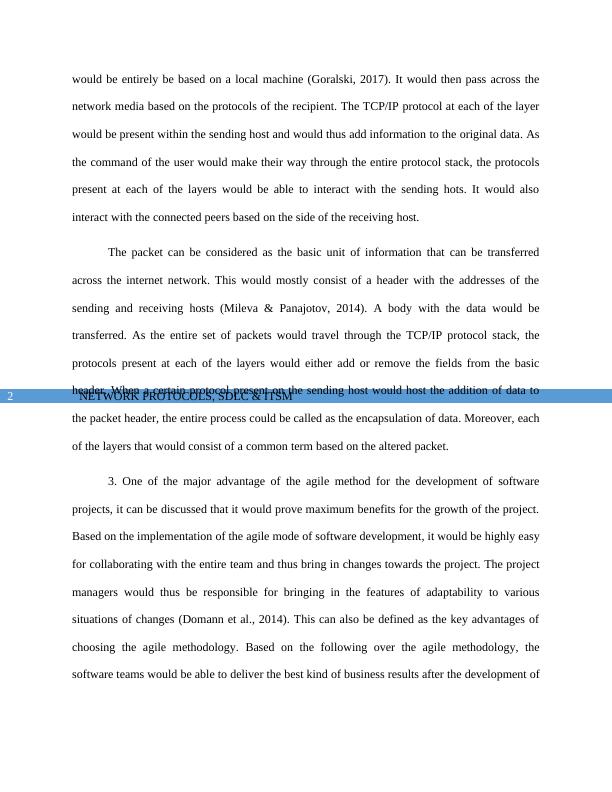Network Protocols, SDLC & ITSM
Answering questions related to network protocols, SDLC, and ITSM
9 Pages2605 Words80 Views
Added on 2022-12-20
About This Document
This document discusses network protocols, SDLC, and ITSM. It covers topics such as file transfer, TCP/IP protocol stack, agile software development, Apple's product development process, project failure causes, and budget planning for software procurement.
Network Protocols, SDLC & ITSM
Answering questions related to network protocols, SDLC, and ITSM
Added on 2022-12-20
ShareRelated Documents
End of preview
Want to access all the pages? Upload your documents or become a member.
Network Protocols, SDLC & ITSM.
|9
|1764
|2
Network Protocols, SDLC & ITSM
|14
|3637
|342
TCP/IP Model, Software Development Process and ITSM
|8
|1316
|229
Network Protocols, SDLC & ITSM
|7
|1244
|424
TCP/IP Model, Software Development Process and ITSM
|8
|1638
|454
Networking Fundamentals
|7
|1169
|201



